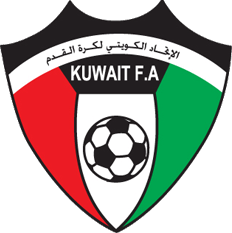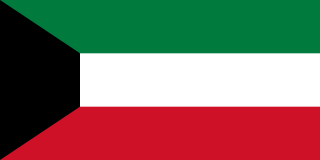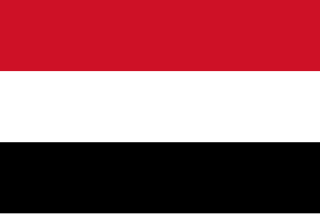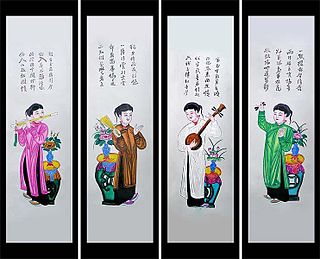
Since its independence in 1961, Kuwait maintained strong international relations with most countries, especially nations within the Arab world. Its vast oil reserves gives it a prominent voice in global economic forums and organizations like the OPEC. Kuwait is also a major ally of ASEAN, a regional ally of China, and a major non-NATO ally.

Jasmine is a genus of shrubs and vines in the olive family of Oleaceae. It contains around 200 species native to tropical and warm temperate regions of Eurasia, Africa, and Oceania. Jasmines are widely cultivated for the characteristic fragrance of their flowers. Additionally a number of unrelated species of plants or flowers contain the word "jasmine" in their common names.

The Kuwait national football team is the national team of Kuwait and is controlled by the Kuwait Football Association. Kuwait made one World Cup finals appearance, in 1982, managing one point in the group stages. In the Asian Cup, Kuwait reached the final in 1976 and won the tournament in 1980.

Rhanterium epapposum is a plant of the family Asteraceae. Native to the deserts of the Arabian Peninsula including Kuwait, Saudi Arabia and Qatar where it is known locally as arfaj. The arfaj consists of a complicated network of branches scattered with small thorny leaves and bright yellow flowers about 1.5 cm wide. The arfaj flower is also the national flower of Kuwait and Saudi Arabia. It is a bushy shrub approximately 80 cm in height. The leaves are small and narrow, and in late spring it will start flowering (April–May). It is considered one of the main desert forage plants for camels and sheep.

The 7th Asian Games, also knwon as Tehran 1974, were held from 1 to 16 September 1974 in Tehran, Iran. The Aryamehr Sports Complex was built for the Games. The Asian Games were hosted in the Middle East for the first time. Tehran, the capital of Iran, played host to 3,010 athletes coming from 25 countries/NOCs, the highest number of participants since the inception of the Games.
Over the course of its history, the LGBT community has adopted certain symbols for self-identification to demonstrate unity, pride, shared values, and allegiance to one another. These symbols communicate ideas, concepts, and identity both within their communities and to mainstream culture. The two symbols most recognized internationally are the pink triangle and the rainbow flag.

Kuwait, officially the State of Kuwait, is a country in West Asia. It is situated in the northern edge of Eastern Arabia at the tip of the Persian Gulf, bordering Iraq to the north and Saudi Arabia to the south. With a coastline of approximately 500 km (311 mi), Kuwait also shares a maritime border with Iran. Most of the country's population reside in the urban agglomeration of Kuwait City, the capital and largest city. As of 2023, Kuwait has a population of 4.82 million, of which 1.53 million are Kuwaiti citizens while the remaining 3.29 million are foreign nationals from over 100 countries.
Kuwaiti is a Gulf Arabic dialect spoken in Kuwait. Kuwaiti Arabic shares many phonetic features unique to Gulf dialects spoken in the Arabian Peninsula. Due to Kuwait's soap opera industry, knowledge of Kuwaiti Arabic has spread throughout the Arabic-speaking world and become recognizable even to people in countries such as Tunisia and Jordan.
The national symbols of Egypt are official and unofficial flags, icons or cultural expressions that are emblematic, representative or otherwise characteristic of Egypt and of its culture.
The national symbols of Cyprus are official and unofficial flags, icons or cultural expressions that are emblematic, representative or otherwise characteristic of Cyprus and of its culture.

The national symbols of Iraq are official and unofficial flags, icons or cultural expressions that are emblematic, representative or otherwise characteristic of Iraq and of its culture.

The national symbols of Yemen are official and unofficial flags, icons or cultural expressions that are emblematic, representative or otherwise characteristic of Yemen and of its culture.

The national symbols of Vietnam are official and unofficial flags, icons or cultural expressions that are emblematic, representative or otherwise characteristic of Vietnam and of its culture.

The national symbols of Oman are official and unofficial flags, icons or cultural expressions that are emblematic, representative or otherwise characteristic of Oman and of its culture.















